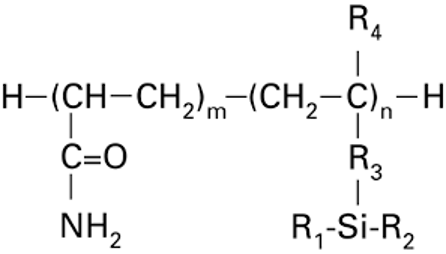FAQs on Analysis with Hydrophilic Interaction Chromatography
What is the chemical structure of the TSKgel Amide-80 column?
The TSKgel Amide-80 resin consists of a spherical silica base material to which carbamoyl functional groups are covalently bonded. The polar functional groups on the sample molecule hydrogen bond to the amide groups on the carbamoyl functionality and are retained.
Figure 1: Functional group (carbomoyl) of TSKgel Amide-80 columns
|
 |
How much sample can I load on the TSKgel Amide-80 column 4.6 mm ID x 25 cm L?
Sample loading capacity increases with decreasing polarity of the mobile phase. For example, the highest loading capacity for mannitol (200 mg) occurs in 75:25 acetonitrile:water but decreases to <100 mg in 65:35 acetonitrile:water. The maximum injection volume is 50 µL.
What kind of mobile phases are recommended for the TSKgel Amide-80 column?
The pH range is 2.5 to 7.5 with a maximum salt concentration of 100 mM. The column is stable in up to 100% organic solvents.
How do you control elution volume in normal phase liquid chromatography?
Elution volume is controlled by the polarity of the mobile phase. By decreasing the mobile phase polarity (increasing the organic component) the sample is retained longer on the column. For example, oligosaccharides are very polar and require 40-50% water in the mobile phase in order to elute.
What is the temperature range of the TSKgel Amide-80 column?
The TSKgel Amide-80 column can be run up to 80 degrees Celsius.